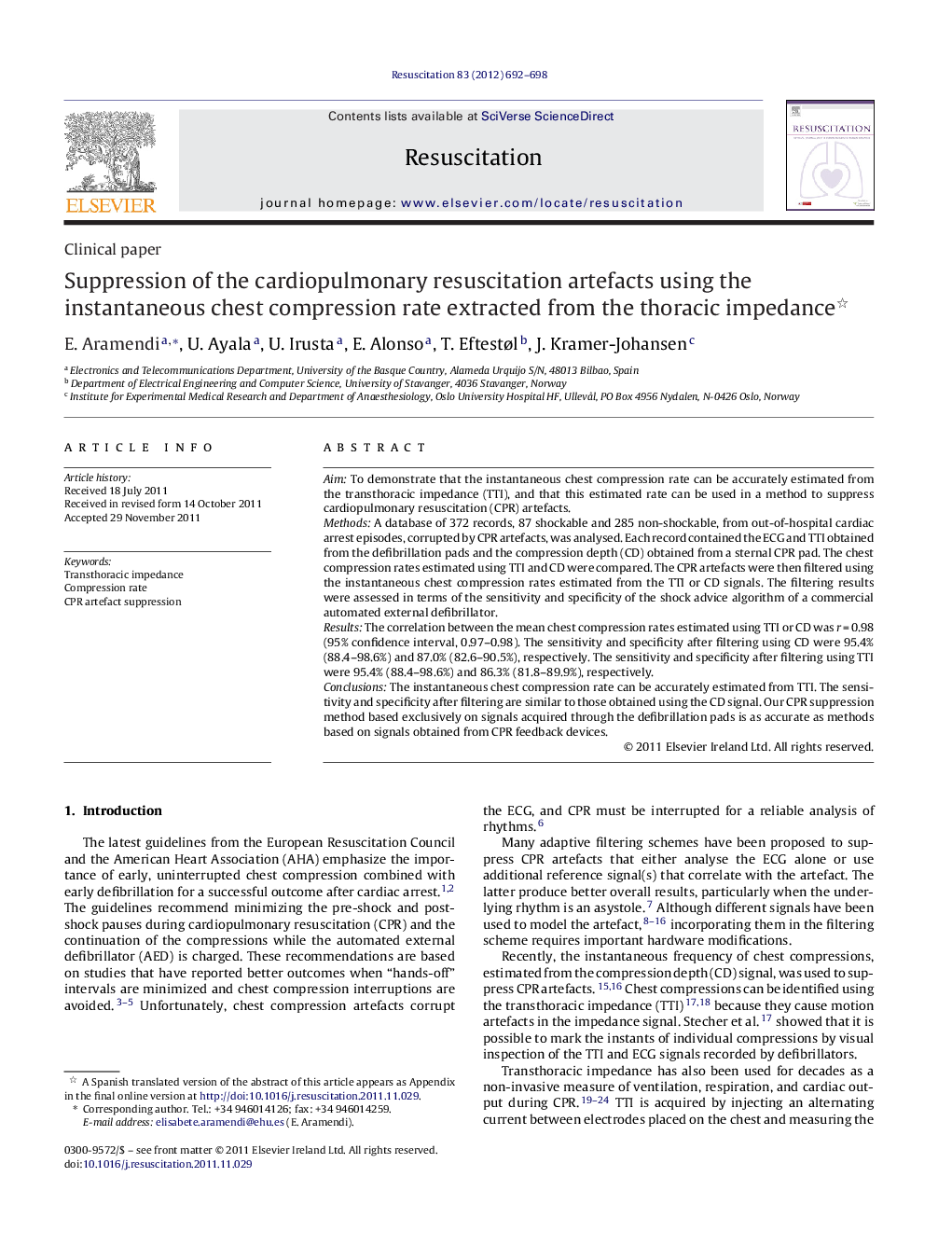| Article ID | Journal | Published Year | Pages | File Type |
|---|---|---|---|---|
| 3009096 | Resuscitation | 2012 | 7 Pages |
AimTo demonstrate that the instantaneous chest compression rate can be accurately estimated from the transthoracic impedance (TTI), and that this estimated rate can be used in a method to suppress cardiopulmonary resuscitation (CPR) artefacts.MethodsA database of 372 records, 87 shockable and 285 non-shockable, from out-of-hospital cardiac arrest episodes, corrupted by CPR artefacts, was analysed. Each record contained the ECG and TTI obtained from the defibrillation pads and the compression depth (CD) obtained from a sternal CPR pad. The chest compression rates estimated using TTI and CD were compared. The CPR artefacts were then filtered using the instantaneous chest compression rates estimated from the TTI or CD signals. The filtering results were assessed in terms of the sensitivity and specificity of the shock advice algorithm of a commercial automated external defibrillator.ResultsThe correlation between the mean chest compression rates estimated using TTI or CD was r = 0.98 (95% confidence interval, 0.97–0.98). The sensitivity and specificity after filtering using CD were 95.4% (88.4–98.6%) and 87.0% (82.6–90.5%), respectively. The sensitivity and specificity after filtering using TTI were 95.4% (88.4–98.6%) and 86.3% (81.8–89.9%), respectively.ConclusionsThe instantaneous chest compression rate can be accurately estimated from TTI. The sensitivity and specificity after filtering are similar to those obtained using the CD signal. Our CPR suppression method based exclusively on signals acquired through the defibrillation pads is as accurate as methods based on signals obtained from CPR feedback devices.
